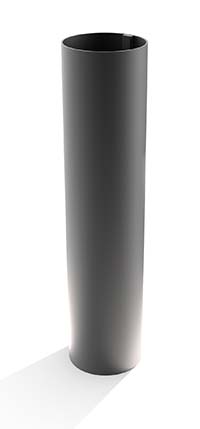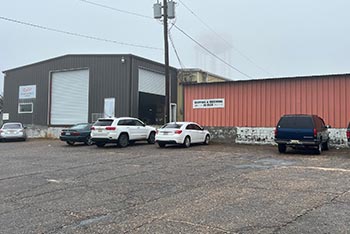In the vast and complex world of manufacturing, selecting the right metal forming process can make a tremendous difference in terms of productivity, quality, and cost-effectiveness. Among the diverse array of methods available, roll forming stands out as a technique offering distinct advantages, yet it is not always the best choice for every application.
To assist manufacturers in the decision-making process, we present an in-depth comparison of roll forming against other prevalent metal forming techniques. This comprehensive analysis will explore key aspects such as precision, material compatibility, production speed, tooling costs, and more. By acknowledging the strengths and weaknesses of each method, manufacturers can make informed decisions, optimizing their production processes and maximizing the return on investment.
Roll Forming: An Overview
Roll forming is a continuous metal forming process that involves gradually bending a strip of metal into a desired profile by passing it through a series of contoured rollers, each applying a successive level of deformation. The process offers several advantages over other metal forming techniques, including customizability, high production efficiency, and the ability to produce long, intricate profiles.
Comparing Roll Forming to Other Metal Forming Techniques
When selecting the most appropriate metal forming process for your needs, it is essential to consider factors such as production volume, material compatibility, complexity of the desired shape, tooling costs, and the potential need for secondary operations. Below are key considerations when comparing roll forming to other metal forming techniques:
1. Production Volume: Roll forming is best suited for medium to high volume production, as the process runs continuously and yields consistent profiles. Stamping is also a viable choice for high-volume scenarios.
2. Material Compatibility: While roll forming accommodates a wide range of materials, it is particularly well-suited for metals with good formability, such as aluminum, carbon steel, and stainless steel.
3. Shape Complexity: Roll forming and extrusion can produce intricate profiles with high levels of precision, although extrusion may require additional finishing processes to attain the final desired dimensions. Stamping is well-suited for producing parts with various complexities, whereas bending is typically limited to simpler shapes and geometries.
4. Tooling, Setup, and Changeover Costs: Tooling and setup costs can vary substantially between the various metal forming methods. Stamping tends to have the highest tooling costs due to die design and production, while roll forming and extrusion have moderate expenses. Bending typically has the lowest tooling costs, making it a suitable choice for smaller-scale projects or those involving numerous changeovers.
5. Secondary Operations: Roll forming often minimizes the need for secondary operations, as it can incorporate processes like notching, cutting, and hole punching within the production line. Stamping and bending may also require fewer secondary operations, depending on the part’s complexity and the used equipment. Conversely, extrusion often necessitates additional finishing steps to achieve desired dimensions and tolerances.
Lead Times and Scalability: Key Factors to Consider
When exploring metal forming options, it’s essential to evaluate the overall lead times associated with each process and how easily they can be scaled to meet demands. Roll forming has the advantage of continuous production, which means it can efficiently churn out large quantities of parts with relatively short lead times. The setup and changeovers for roll forming tend to be quicker compared to other methods, contributing to shorter lead times.
Stamping offers quick production cycles, but the time required to manufacture or modify custom tooling impacts the overall lead time for stamped parts. Extrusion, on the other hand, may require longer lead times due to the need for custom die production and, in some cases, additional finishing operations.
Bending has relatively low tooling and setup requirements, which can result in shorter lead times. However, it’s crucial to consider the production speed of the process, as bending may be slower than stamping and roll forming for high-volume production runs.
Material Waste and Cost Efficiency
Material waste and the eco-friendliness of the manufacturing process are becoming increasingly important considerations for manufacturers. Roll forming is known for its material efficiency, as it produces minimal waste through a continuous strip feeding process. By optimizing the coil width and utilizing inline cut-off systems, the material usage in roll forming can be highly efficient.
Stamping and bending processes generate various levels of waste, often in the form of scrap material. This scrap can arise from the initial blanking process in stamping or the offcuts resulting from producing bent profiles. Implementing efficient scrap management and recycling systems can mitigate material waste to some extent.
Extrusion also creates waste in the form of “runners,” which are excess material produced as a part of the extrusion process. These runners can be minimized using optimization techniques and recycling systems, although their presence should be accounted for when evaluating material waste within this process.
Bringing It All Together: Selecting the Right Metal Forming Technique
Ultimately, the decision between roll forming and other metal forming techniques is not a matter of superiority or inferiority, but rather a question of suitability and appropriateness. Manufacturers need to consider multiple factors, including cost, production time, part complexity, material type, required precision, and environmental impact. By doing so, they can make informed decisions that will optimize their processes, improve product quality, and enhance overall operational efficiency.
At Roller Die + Forming, we specialize in delivering customized roll forming solutions to meet our clients’ unique requirements. To learn more about how we can help you find the right metal forming solution for your needs, contact our team today. Let us partner with you to create the perfect metal parts for your next project!












